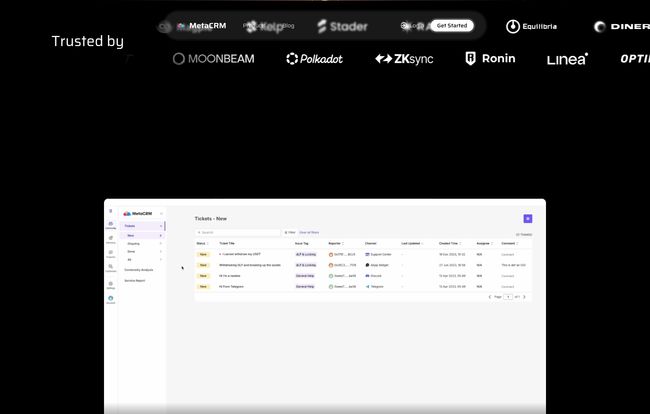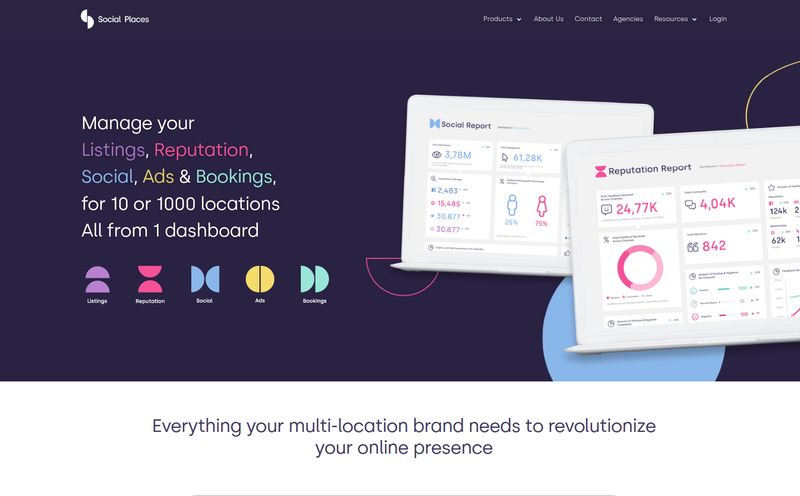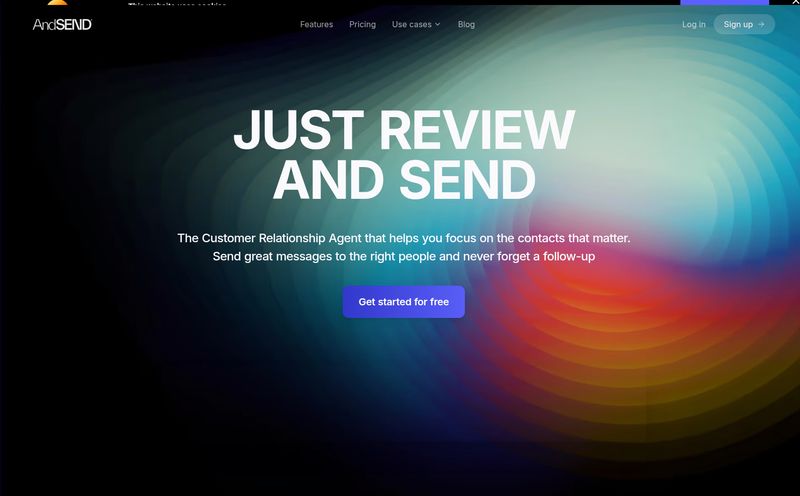Marketing in Web3 can feel like you’re trying to herd cats. In the dark. During a thunderstorm. For years, we've been grappling with the same old problems: anonymous wallet addresses, user journeys scattered across a half-dozen different blockchains, and an attribution model that’s about as clear as mud. You throw a bunch of money at a Twitter campaign, you see some on-chain activity, and you just... hope? Yeah, I've been there, and the sleepless nights are real.
So when a tool comes along calling itself an “All-in-One Web3 Growth Stack,” my inner skeptic immediately raises an eyebrow. We’ve seen a lot of projects promise the moon and deliver, well, a moon-themed GIF. But then I saw who was trusting MetaCRM—big names like Polkadot, zkSync, Linea, and Optimism. Okay, now you have my attention. This isn't just some fly-by-night operation. These are serious players in the ecosystem. Could this be it? The tool that finally brings some Web2 marketing sanity to the beautiful chaos of Web3?
What Exactly is MetaCRM? Beyond the Buzzwords
Alright, let's cut through the marketing fluff. At its heart, MetaCRM is a Customer Relationship Management (CRM) platform, but it’s been built from the ground up for the on-chain world. Think of your classic HubSpot or Salesforce, but instead of tracking email opens and form fills, it’s tracking wallet transactions, token swaps, and Discord interactions.
More specifically, it’s a Web3 Customer Data Platform (CDP). The whole point is to take all those disparate pieces of information—a wallet address on Ethereum, a different one on Polygon, a Discord handle, a Telegram username—and synthesize them into a single, unified user profile. It aims to answer the million-dollar question: who are these wallet addresses, and what do they actually do? For anyone who has ever stared at a list of 0x... addresses and wished they could just understand their community better, this is a pretty big deal.

Visit MetaCRM
The Core Features That Actually Matter
A platform is only as good as its features, right? I've seen countless tools with flashy dashboards that don’t actually move the needle. So, I took a closer look at what MetaCRM really brings to the table for a growth-focused team.
Universal Profiles and Intelligent Segmentation
This is the bedrock of the whole platform. The idea of a “Universal Profile” is to connect the dots. A user might hold your governance token in a Ledger-secured wallet but use a hot wallet like MetaMask for daily transactions and gaming. To a traditional block explorer, those are two different people. MetaCRM works to stitch that data together, creating a much richer picture of an individual user's behavior.
Once you have those profiles, the magic really starts with segmentation. This isn't your basic “subscribed to newsletter” list. We're talking about creating dynamic segments like:
- "DeFi Power Users who have supplied more than $10,000 in liquidity and voted on at least two governance proposals."
- "NFT collectors who hold at least three NFTs from our main collection and have been active in our Discord in the last 7 days."
- "Users who bridged assets from Arbitrum but haven't yet used our dApp on zkSync."
This level of granularity is what allows for truly personalized marketing and community engagement. It's the difference between shouting into the void and having a real conversation.
Cross-Chain Marketing Attribution That Makes Sense
I’ve been banging this drum for years. Proving marketing ROI in Web3 is a nightmare. You run a campaign, you see a spike in transactions, but connecting Point A to Point B is often guesswork. MetaCRM tackles this head-on with cross-chain attribution.
It helps you connect the dots between your marketing efforts (a specific tweet, a partnership announcement, a QuestN campaign) and the on-chain actions that result. Imagine being able to definitively say, “Our influencer campaign on YouTube drove 30% of new liquidity providers this month.” That’s not just a nice-to-have metric; it’s a game-changer for budget allocation and strategy. It transforms marketing from a cost center into a predictable growth engine. The fact that major L1s and L2s are using this tells you how critical this function is.
AI-Powered Customer Service for the Degens
Community management is a 24/7 job. Your Discord and Telegram are constantly flooded with questions, from the basic “wen token?” to complex technical support queries. It's impossible for a human team to keep up.
MetaCRM’s AI-automated customer service is designed to be the first line of defense. But it's not just a generic chatbot. Because it’s integrated with all that rich user data, it can provide context-aware support. It can check a user’s on-chain history to troubleshoot a failed transaction or provide personalized onboarding tips based on their holdings. It's like giving your community managers a super-powered assistant who never sleeps, freeing them up to focus on high-value conversations and community building.
Putting It All Together: A Practical Example
Theory is great, but let's walk through a real-world scenario. Imagine your project is launching a new DeFi protocol on Optimism.
First, you’d use MetaCRM to identify and segment potential power users. You could build a list of wallets that have previously interacted with protocols like Aave or Uniswap on other EVM chains. Then, you'd layer on another filter for wallets that also hold at least $1,000 in ETH to ensure they have the capital to participate.
With this highly-targeted list, you can create a personalized airdrop or an exclusive early access campaign. You reach out to them via integrated channels like Telegram or even on-chain messaging. As they start to use your new protocol, the AI support bot handles their initial questions, like “How do I stake my tokens?” or “Where can I find the analytics dashboard?”
Finally, your dashboard lights up. The attribution feature shows you exactly which segment of users is converting the best, allowing you to double down on what works for the public launch. That entire workflow, from identification to conversion and support, is managed within one stack. That’s teh power we're talking about.
The Good, The Bad, and The On-Chain
No tool is perfect, and a real review needs to look at both sides of the coin. After digging in, here's my honest take on the pros and cons.
The advantages are pretty clear. You get a unified, cross-chain view of your users, which is the holy grail for any Web3 marketer. The ability to properly segment your audience based on actual on-chain behavior is incredibly powerful, and the AI-driven support can bring massive efficiency gains to your community team. It professionalizes your entire growth operation, giving you the kind of data-driven capabilities that Web2 companies have relied on for over a decade.
However, it’s not all sunshine and airdrops. One potential drawback is the technical lift. This isn't a simple WordPress plugin; integrating it properly to pull data from various sources and your own smart contracts will likely require some developer resources. Also, and this is a big one for many startups, the platform is only as good as the data it’s built on. If the blockchain data is messy or an indexer goes down, the accuracy of your insights could be affected. It's a dependency you have to be comfortable with.
So, How Much Does MetaCRM Cost?
Ah, the question on everyone's mind. If you go looking for a pricing page on the MetaCRM website, you won’t find one. This is a classic sign of an enterprise-level, B2B SaaS product.
Pricing is almost certainly customized based on your project's needs. Factors would likely include the number of user profiles you're tracking, the number of chains you need to integrate, your monthly active users, and which specific modules you need (e.g., just the CDP, or the AI support too?). While this lack of transparency can be frustrating for smaller teams, it's standard practice for tools this comprehensive. The best approach is to book a demo with their team and get a custom quote tailored to your specific situation.
My Final Take: Is MetaCRM Worth It?
In my experience, tools like MetaCRM represent a necessary maturation of the Web3 space. For a long time, we've been focused purely on the technology. Now, we're finally building the business infrastructure needed to support that technology and drive real adoption.
Is MetaCRM for everyone? Probably not. If you're a small hobbyist project just starting out, this is likely overkill. But if you're a serious project with a growing community, a multi-chain presence, and a dedicated marketing budget, then yes, MetaCRM could absolutely be the missing link in your growth stack. It solves some of the most persistent and frustrating problems that Web3 marketers face every single day.
It’s a sign that we’re moving beyond just building cool tech and starting to build sustainable businesses on-chain. And frankly, I think that's incredibly exciting.
Frequently Asked Questions about MetaCRM
- What is MetaCRM in simple terms?
- It's a CRM and data platform designed for Web3. It helps crypto projects understand their users (who are often just anonymous wallets) by analyzing their blockchain activity and then use those insights for marketing and support.
- Who is MetaCRM for?
- It’s best suited for mid-to-large scale Web3 projects, including DeFi protocols, NFT collections, Web3 games, and layer-1 or layer-2 ecosystems that need to manage a large, diverse community and measure marketing effectiveness.
- Does MetaCRM support multiple blockchains?
- Yes, its cross-chain capability is a core feature. It's built to track user behavior across different chains, which is why it's trusted by platforms like Polkadot, zkSync, and Optimism.
- Is MetaCRM difficult to set up?
- It can be more involved than a simple plug-and-play tool. Depending on your project's complexity and existing tech stack, you will likely need some technical or developer assistance to get it fully integrated and pulling the right data.
- How does the AI customer service work?
- It integrates with community platforms like Discord and Telegram. The AI is trained on your project's specific data, documentation, and the user's on-chain history to provide automated, context-aware answers to common questions, freeing up your human support team.
- Why is there no public pricing for MetaCRM?
- This is common for enterprise software. Pricing is typically customized based on a project's scale and needs, such as the number of users tracked and features required. You'll need to contact their sales team for a demo and a custom quote.
Conclusion
The days of 'spray and pray' marketing in Web3 are numbered. As the space grows more competitive, the projects that win will be the ones that truly understand their users. Platforms like MetaCRM are at the forefront of this shift, providing the essential infrastructure to turn anonymous on-chain data into actionable business intelligence. While it may not be the right fit for every single project out there, for those serious about growth, it represents a powerful tool to build, engage, and retain a thriving community in this ever-evolving ecosystem.
Reference and Sources
- MetaCRM Official Website: https://metacrm.inc/
- zkSync Official Website: https://zksync.io/
- Polkadot Official Website: https://polkadot.network/



